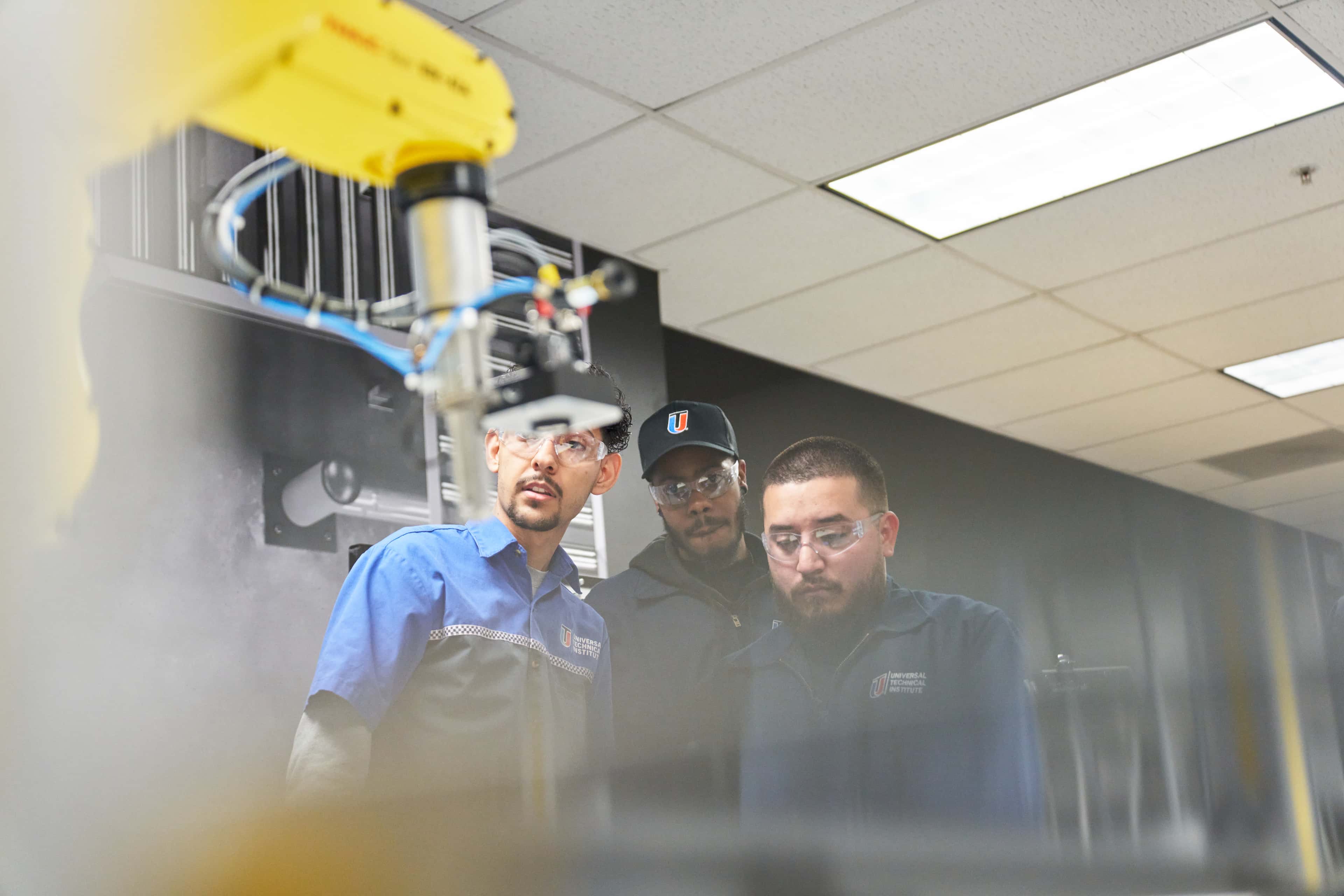The Guide to Robotic Welding
Considering a career in welding? Curious about how robots are being brought into the welding industry? This is for you!
Welding is an essential skill in many industries, from automotive to construction. More recently, robotic welding has been integrated.
Dive into what robotic welding is, types of robotic welding, advantages and so much more!
What Is Robotic Welding?
Robotic welding involves using programmable robots to automate the welding process. It relies on machines to perform welds, unlike traditional welding. These robots have arms that can move in various directions, allowing them to weld materials of different shapes and sizes.
This technology isn’t about replacing human welders. It’s about enhancing the safety, quality and efficiency of welding jobs. Robots can work faster and longer than humans, making them ideal for repetitive tasks. They also help eliminate human error, resulting in cleaner, more precise welds.
Robotic welding systems include sensors and software that control the welding process. These systems adapt to different welding techniques, ensuring a high level of accuracy. They are used in industries like automotive manufacturing, where precision and speed are crucial.
Robotic Welding Types
A robot welder isn’t a one-size-fits-all solution. There are different types of robotic welding, each suited for specific tasks and materials.
Spot welding
Spot welding is one of the most common types of robotic welding. It involves joining two pieces of metal at small points, or "spots," using heat generated by electrical resistance. This method is widely used in the automotive industry for assembling car bodies.
Arc welding
Arc welding uses an electric arc to melt metal, allowing it to fuse together. This type of robotic welding is popular in industries that require strong, durable welds, such as shipbuilding and aerospace. The robot's arm holds the welding torch, and the software controls the arc's intensity and duration.
Laser welding
Laser welding employs high-intensity laser beams to melt and join materials. This method is highly precise and can be used on thin materials that might be damaged by other welding techniques. Laser welding is often used in electronics and medical device manufacturing.
Advantages of Robotic Welding
Several advantages make robotic welding an attractive option for many industries. Here are some key benefits:
- Increased efficiency: Robotic welders can work without breaks, which increases productivity. They can also complete tasks faster than human welders. This reduces the time required to finish a project.
- Improved quality: Consistency is crucial in welding. Robots excel at producing uniform welds. This reduces the likelihood of defects and ensures a higher-quality end product. The precision of robotic welding also means fewer errors and less material waste.
- Enhanced safety: Welding can be a hazardous job, involving high heat and toxic fumes. Using robotic welders minimizes the risk to human workers, making the workplace safer. Robots can perform tasks in environments that might be dangerous for humans, such as confined spaces or areas with poor ventilation.
Disadvantages of Robotic Welding
While robotic welding offers many advantages, it’s not without its drawbacks.
- High initial cost: Purchasing and setting up a robotic welding system can be expensive. However, it’s essential to consider the long-term benefits and cost savings in terms of increased productivity and reduced labor costs.
- Maintenance and repairs: Robotic systems need regular maintenance to function correctly. If a robot breaks down, it can disrupt the entire production line. Ensuring that you have the resources and expertise to maintain these systems is crucial for long-term success.
- Limited flexibility: While robots excel at repetitive tasks, they may struggle with more complex or unique welding jobs. Human welders can adapt to new tasks, but reprogramming a robot can be time-consuming and challenging.
Common Applications of Robotic Welding
Robotic welding has a wide range of applications across various industries.
Automotive industry
In the automotive industry, robotic welding is used to assemble car bodies, frames and other components. The precision and speed of robotic welders make them ideal for this industry, where consistency and quality are important.
Construction
In construction, robotic welding is used to fabricate steel structures, bridges and buildings. The ability of robots to produce strong, durable welds is crucial in this industry, where safety and stability are essential.
Aerospace
The aerospace industry relies on robotic welding for manufacturing aircraft components and assemblies. The high precision and reliability of robotic welders ensure that the parts meet the strict quality standards required in this industry.
What Training Is Required To Operate a Robot Welder?
For those considering a career in welding or looking to expand their skills, learning about robotic welding opens exciting opportunities in various industries.
If you're ready to take the next step, consider enrolling in UTI’s Robotics & Automation Technician programs! They can help you gain the skills and knowledge required to pursue robotics and automation careers.1
Request more information to dive into the program, an Admissions Representative will reach out. You can also fill out an application here to get started today!
Universal Technical Institute of Illinois, Inc. is approved by the Division of Private Business and Vocational Schools of the Illinois Board of Higher Education.

